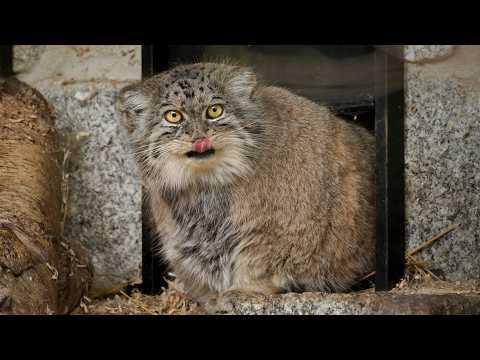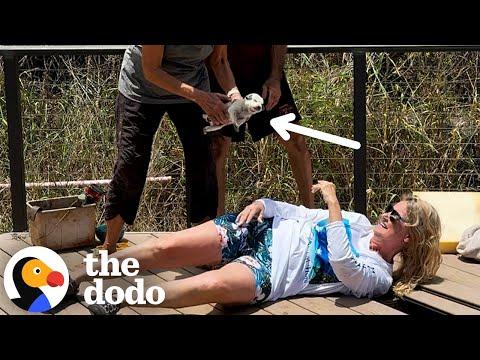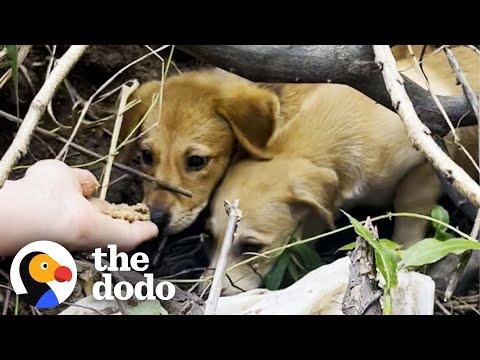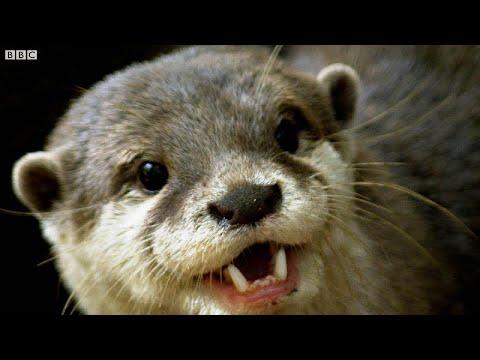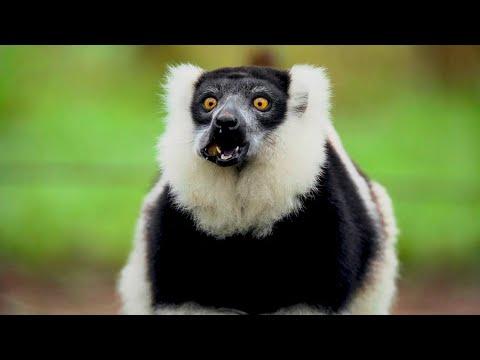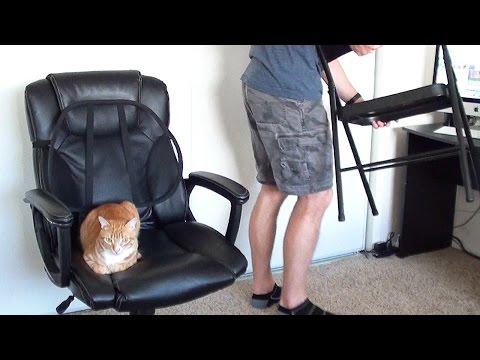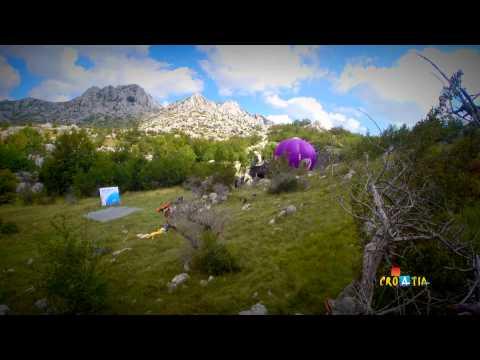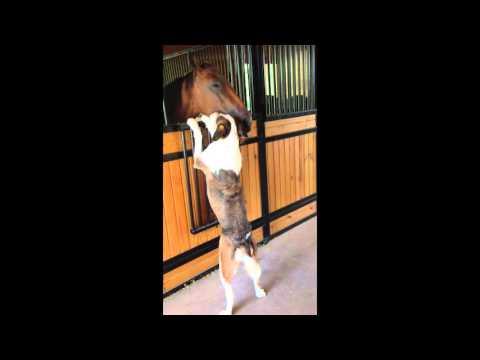4 Adorable Animals That You Might Never Have Heard Of | The Science of Cute | BBC Earth
Description
A tiny hippo and a kangaroo that lives in a tree? Have you heard of these adorable animals?
Video Script::
[Music] when you think of cute animals you immediately think of small furry species well in this episode we've got plenty of that even if you've never heard of them [Music] I'm Hannah Sifl and today we're at Bristol Zoo taking a look at some unusual species with much larger well known cousin [Music] our first species is highly elusive and confined to the interior jungles of West Africa a nocturnal forest creature that is a tenth of the size of its well known cousin the African river hippo it is the very shy and very cute pygmy hippo these tiny hippos are mainly found in the forests of Liberia but also the Ivory Coast during the day they stayed well hidden amongst the undergrowth of swamps and riverbanks mainly being active at night to feed just like they're much larger cousins they come onto land in the cool of the night to graze vegetation it's thought they eat a variety of roots leaves and fruits but they also have the ability to stand up on their hind legs to reach vegetation higher up in the bushes if they want to although they look just like a miniature version of the African river hippo pygmy hippos in fact have many different features they lead a semi-aquatic lifestyle but are much less adapted to water their feet are less webbed and they spend more of their time on land they have rounded shorter snouts with smaller nostrils and they only have one set of incisor teeth pygmy hippos are also generally solitary creatures although it has been reported they sometimes move around together in pairs [Music] still very little is known about pygmy hippos in the wild due to their habits environment and their size they are very difficult to study with estimates putting their population numbers only between 2,000 or 3,000 so let's hope we can find out more about these beautiful creatures our next species is only found in the forests of the very northern tip of Madagascar and they are the smallest true lemurs in the world the crowned lemur these lemurs are in the same family as the Mongoose and red lemurs and they are fantastic characters all with their very own personalities being active during the day they will spend their time traveling through the undergrowth foraging for fruits which make up between 80 to 90 percent of their diet [Music] crowned lemurs will often come to ground to forage taking advantage of the seasonal fruiting bushes in the dry forests of Madagascar they will travel in groups of up to 15 individuals in the wild and it is easy to tell the difference between the males and females due to their coloration the males have a full coverage of reddish brown fur with a black patch on the tops of their heads whereas the females have grey fur all over their bodies and both have a bright orange reddish crown their main predator is the fossa Madagascar's top carnivore but they will also be taken by eagles and crocodiles so it really is safety in numbers and if there's any sign of danger nearby the crowned lemurs will make an alarm call to the rest of the group and they will flee to safety and when you only weigh in at 1.7 kilograms being part of a group really does help [Music] one animal has a name that you would usually associate with the Outback of Australia but unlike its distant cousins that bounce around the bush this species has taken to climbing through the trees the Goodfellows tree kangaroo a rather peculiar looking marsupial with its reddish brown fur and long rounded claws it is endemic to the mountainous rainforests of Papua New Guinea in comparison to their Australian ground-dwelling cousins they are incredibly small being less than half the size of the Australian kangaroo we all know and love being adapted to life in the forests tree kangaroos have shorter legs and strong stocky 4 limbs which enable them to climb through the canopy even though they can still appear a little bit clumsy they feed on a variety of leaves buds and fruits in the wild and have an excellent sense of smell which helps them to find the tastiest vegetation they also have the ability to move their back legs independently from one another meaning they can walk backwards along the branches they have long almost golden tails which not only help them balance as they clamber through the trees but their patterns are completely unique to the individual much like we have unique fingerprints the Good Fellas tree kangaroos reddish brown tail markings are all completely different they are highly elusive and incredibly difficult to spot spending most of their time way up high in the rainforest canopy and to this day very little is known about them [Music] our next species weighs in at just roughly 500 grams and is one of the world's smallest monkeys but what it lacks in size it certainly makes up for in appearance it is the golden lion tamarin these tiny new world monkeys are found in the humid forests along the Atlantic coast of Southeast Brazil and they are simply adorable they get their name from their impressive golden orange mane which looks similar to the mane of a lion golden lion tamarins are highly sociable animals in the wild they will live in family groups between two and eight individuals and they will never leave each other's side social grooming plays an important role in family bonding as well as play fighting and wrestling one another each family group will have one breeding pair and when the female is ready to give birth she will usually give birth to twins the entire family helps to take care of the babies but it is usually the adult male that does most of the work and he will carry the babies for up to five weeks until they are ready to start exploring their environment they are highly active during the daytime maybe having a mid-afternoon snooze but at night they will find small holes in the trees to sleep in keeping them safe from predators all through the night during our time at Bristol Zoo we were very lucky to be invited in to see a little bit of what happens behind the scenes with the crowned lemurs and we were joined by Shaniqua the senior large mammal keeper to take a closer look we don't encourage them on the door but they obviously come to see if we've got any food for them which I've hidden in my pockets we can't see but as soon as I come through she'll go away so if you just step to the side here yeah they've got amazing hands let's just say human-like and well bit spider like as well aren't they they really are so tell us a bit about your crown lemurs that with now surrounded by ambitious with me and well we've got a full crown lemurs at the moment we've got mum and dad say this one over here is loco he's the dirt and behind you on the Shelf up there is T aku he's the mum and then we've got the twins we've got sunny here and we've got muddy yeah I've got a lovely little family group here so you can see that the females are different colors from the male so they're more gray so they're what we call sexually dimorphic yeah so they're the males over orange your color females are a gray color and they call crowned lemurs if you look at their heads they've got just a crown shape what's their conservation status in the wild so like all lemurs they're endangered and there's hardly any of them in the world cuz they're only they're only found on Madagascar and so basically there's a lot of deforestation going on there sometimes hunting as well so there's not many of them left in the world so that's why we've got these guys here they're they're super important to breed them in case we can ever release them back bris hoodie does support a project out in Madagascar so we've been I think it's like 14 years we were supposed to put it out there actually and they've done all sorts of studies on the world lemurs just it's very interesting isn't it really we've done all sorts of studies just orally my behavior and that kind of thing the amount of numbers they've got in the world because that's something that's relatively understudied and they're in the middle of building research then throughout this that we can actually go over and we can monitor these guys in the world which would be incredible so that'd be lovely once it's all done now was this useful this contraption thing here they've basically old-school zoo keeping if an animal was sick you'd have to kind of grab it in a net and take it up to the vets in an emergency style but nowadays we don't we need to do stuff like that anymore because they're very very easy to train to do things like that so what we've got here is what we call a catch up to you yeah so I've got some sneaky sweet potato in my pocket which is their favorite and if I him I offered them a bit of sweet potato in there they'll go in and I can shut them in and it's stress free and then if I needed to take them to the vet I could literally just take that up to the Vet Center and they'd be absolutely fine and then we just let them out and you can see is not really bothered at all and what will their diet consists of the wild in the world there'll be mainly eating fruits and that lays of studies have shown that actually the fruit they eat in the world is the same sugar content of the vegetables that we have here so if we do give them fruit it's the equivalent to giving them like loads of sugar and sweets so what we've done is we just feed them on vegetables now because it's the kind of the same nutritional content and quality that they would have in the wild I mean they're absolutely gorgeous they are look at the thank you so much for giving us a behind the scenes look at the crown lemurs here they're absolutely brilliant thank you oh you're welcome glad to you [Music] [Applause] [Music] [Applause]




